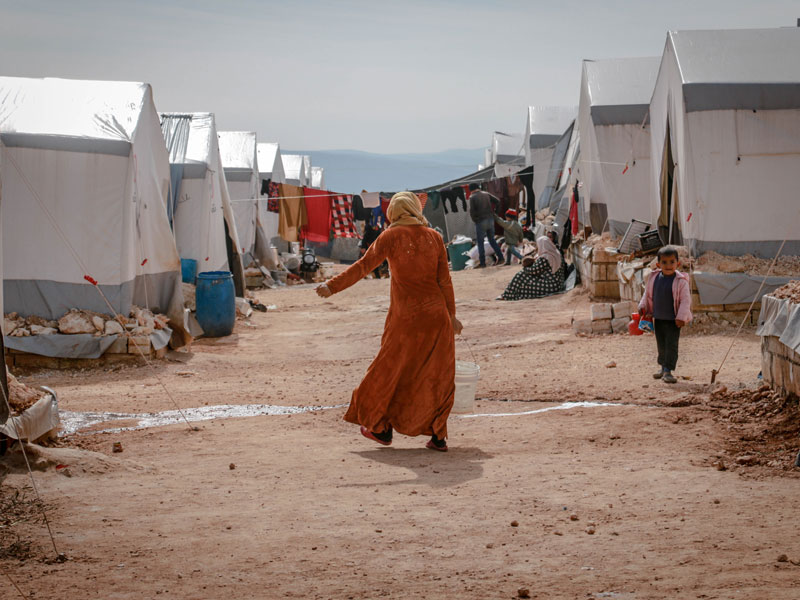
The world is changing before our eyes, and the impacts of climate change are becoming increasingly evident. Rising sea levels, extreme weather events, and prolonged droughts are forcing entire communities and populations to leave their homes. This growing global crisis of climate refugees is not just a humanitarian concern but also a significant financial challenge.
The Plight of Climate Refugees
Climate refugees, often referred to as environmental refugees or climate-induced migrants, are individuals and communities forced to abandon their homes due to the direct or indirect consequences of climate change. This includes coastal regions facing the encroaching seas, families fleeing from the wrath of extreme weather events, and farmers grappling with dwindling resources due to recurrent droughts.
Consider the plight of the Pacific Island nation of Kiribati. Rising sea levels and saltwater intrusion have rendered large parts of this low-lying country uninhabitable. As a response, Kiribati has been acquiring land in Fiji as a potential relocation option for its population. This case exemplifies the dire challenges faced by small island nations in the Pacific and underscores the urgency of addressing the climate refugee crisis.
Direct Financial Costs
One of the most immediate financial burdens stemming from climate refugees is the cost of emergency relief and humanitarian aid. When a climate-related disaster strikes, affected communities require immediate essentials such as food, clean water, shelter, and medical care. The mobilisation of resources to provide for these basic needs places a substantial financial burden on both governments and international humanitarian organisations.
Bangladesh, a nation highly vulnerable to flooding and cyclones, is an illustrative case. Organisations like the Bangladesh Red Crescent Society work tirelessly to provide emergency relief to affected populations. However, the scale of the challenge is enormous, with resources often stretched to their limits.
Beyond the immediate costs, climate refugees generate indirect financial implications that affect economies, infrastructure, and social systems. When climate refugees seek refuge in neighbouring regions or countries, host communities often bear a significant financial burden. These host communities must provide essential services such as education, healthcare, and housing to newcomers, straining local resources and infrastructure.
In East Africa’s Lake Chad region, prolonged droughts have triggered conflicts over dwindling resources, displacing numerous communities. The resultant strain on host communities exacerbates the economic and social costs associated with climate refugees.
The financial impact of climate refugees reverberates throughout the global economy, necessitating concerted attention and action.
Reduced labour mobility among climate refugees restricts their contribution to the labour force, impeding economic growth, particularly in regions heavily reliant on agriculture and manufacturing. Furthermore, the disruption of supply chains due to the displacement of climate-affected workers and businesses can lead to economic losses and the need for costly production relocations.
Adapt or die
Addressing the financial impact of climate refugees requires a comprehensive approach encompassing mitigation, adaptation, and international cooperation.
Mitigation Measures: Reducing greenhouse gas emissions remains the most effective long-term strategy to mitigate climate change and limit the displacement of populations. Investments in clean energy, sustainable agriculture, and carbon reduction initiatives can prevent the escalation of climate-related disasters.
Adaptation Strategies: Nations must adopt adaptive strategies to cope with existing and impending climate change impacts. These strategies include building resilient infrastructure, implementing early warning systems, and enhancing disaster preparedness to mitigate the financial burden of displacement. The Netherlands, renowned for its robust flood defenses and water management systems, provides a shining example in this regard.
International Cooperation: Collaboration on a global scale is paramount. Providing financial assistance to affected countries, supporting climate resilience initiatives, and establishing legal frameworks to safeguard the rights of climate refugees are critical steps. The Global Compact on Refugees, adopted by the United Nations, seeks to address the challenges of forced displacement, including those caused by climate change.
Taking action
The financial impact of climate refugees is an urgent global issue that demands immediate attention and comprehensive solutions. As the pace of climate change accelerates, the number of displaced individuals and communities continues to rise, placing an ever-expanding financial burden on governments, humanitarian organisations, and the global economy.
Failure to address this crisis could exacerbate the suffering of climate refugees and impose significant economic and security risks worldwide. Proactive measures, climate resilience, and international solidarity are essential to create a more sustainable and equitable future for all. As we grapple with the hidden financial crisis of our time, it is imperative that we take decisive action to mitigate the impact of climate refugees and protect the well-being of vulnerable populations across the globe.


